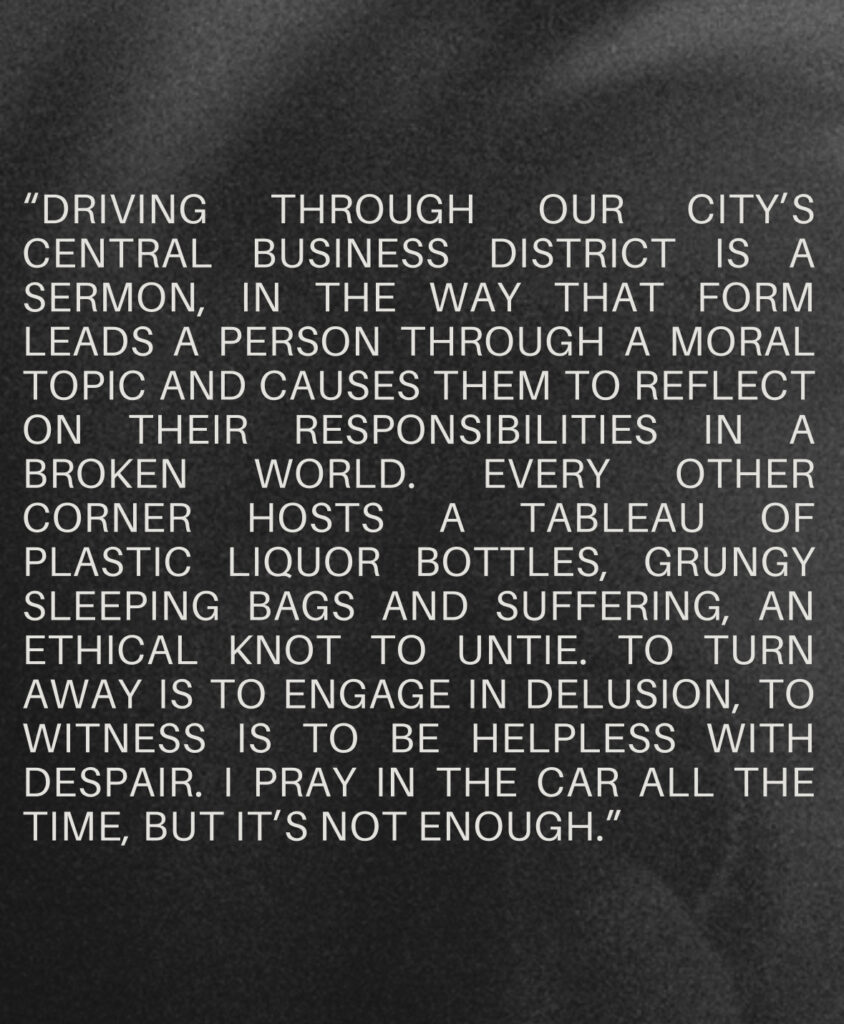Driving by the Anchorage Midtown Walmart recently, I saw a woman’s body curled on the corner where shoppers turn in. She was maybe 90 pounds, face turned skyward, jaw slack, eyes closed. At some other point in time, someone might have stopped to check her pulse or call an ambulance. We don’t live in that kind of town now. In Midtown, human bodies are part of the landscaping.
Driving through our city’s central business district is a sermon, in the way that form leads a person through a moral topic and causes them to reflect on their responsibilities in a broken world. Every other corner hosts a tableau of plastic liquor bottles, grungy sleeping bags and suffering, an ethical knot to untie. To turn away is to engage in delusion, to witness is to be helpless with despair. I pray in the car all the time, but it’s not enough.
Midtown is different from every other neighborhood in Anchorage because most of the indoor space is owned by businesses or landlords, people who don’t live there. The people who do live there are mostly renters, some of the poorest in the city. In that way, everybody is sort of transient, just passing through. Maybe that’s why nobody feels like they’re responsible for what happens there.
